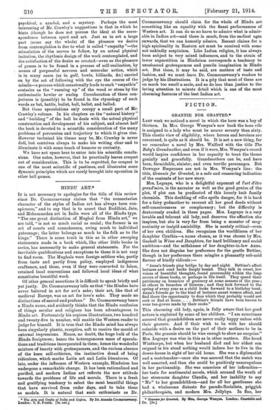HINDU ART.*
IT is not necessary to apologize for the title of this review since Dr. Coomaraswamy claims that "the nonsectarian character of the styles of Indian art has always been con- spicuous," and to say that is to assert that Buddhist, Jain, and Mohammedan art in India were all of the Hindu type. "The one great distinction of Mughal from Hindu art," we are told, "is not so much racial as social; the former is an art of courts and connoisseurs, owing much to individual patronage; the latter belongs as much to the folk as to the kings." There is some truth in this as in other sweeping statements made in a book which, like other little books in series, has necessarily to make general statements. For the inevitable qualifications and exceptions to these it is not easy to find room. The Mughals were foreign settlers who, partly from taste and partly from policy, employed indigenous craftsmen, and these, even if they were converted to Islam, retained local conventions and followed local ideas of what constitutes beautiful work.
Of other general assertions it is difficult to speak briefly and yet justly. Dr. Coomaraswamy tells us that "the Hindus have never believed in art for art's sake; their art, like that of medieval Europe, was an art for love's sake. They made no distinctions of sacred and profane." Dr. Coomaraswamy bears a Hindu name, and.evidently thinks that the Hindu confusion of things secular and religious has been advantageous to Hindu art. Fortunately his copious illustrations, two hundred and twenty-five in number, will enable the Western reader to judge for himself. It is tine that the Hindu mind has always been singularly plastic, receptive, soft to receive the mould of external impressions. Hence, no doubt, the huge bulk of the Hindu Scriptures ; hence the heterogeneous maim of specula- tions and traditions incorporated in them; hence the wonderful mixture of beauty with grotesqueness, and the endow absence of the keen self-criticism, the instinctive dread of being ridiculous, which marks Latin art and Latin literatures. Of late, under the influence of Western example, Hinduism has undergone a remarkable change. It bus been rationalized and purified, and modern Indian art reflects the new attitude towards the problems of life and morals. There is a fresh and gratifying tendency to select the most beautiful things that have survived from ruder days, and to take these as models. It is natural that such enthusiasts as Dr.
• Tba Arta aad Crafts ef London . T.N.Foul.. India and Cegket. By Dr. Amanda Coomarannung. [ea Coomaraswamy should claim for the whole of Hindu art something like an equality with the finest performances of Western art. It can do us no harm to admire what is admir- able in Indian art—and there is much, from the earliest ages onwards, that we can honestly admire. Recent claims for a high spirituality in Eastern art must be received with some not unkindly scepticism. Like Indian religion, it has always been subject to very mixed influences, and to the strain of lower superstition in Hinduism corresponds a tendency to unashamed grotesqueness and puerile imagination in Hindu art. But these, it may be said, are matters of taste and fashion, and we must leave Dr. Coomaraswamy's readers to judge by his illustrations. It is a pity that most of these are on much too small a scale, and so do less than justice to the loving attention to minute detail which is one of the moat charming features of the beat Indian art.














































 Previous page
Previous page